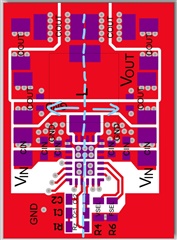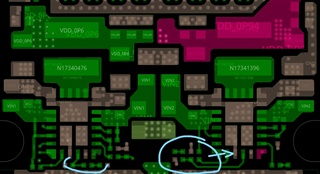Other Parts Discussed in Thread: TPS62874-Q1
Tool/software:
Hi,
Please help to deal with the following materials and products.
1. 1_6T OSFP AEC MARVELL LEO project, customer wants to review power supply design schematics;
2. For the 800G project, please help review the PMIC related schematic diagram.
1_6T OSFP AEC MARVELL LEO Regulators.pdf 800G_AEC_OSFP_Volex design PMIC review.pdf
3. In addition, there is a problem, the switching frequency of the following TPS62876-Q1 datasheet can be configured through hardware, please confirm whether the circuit needs to be adjusted if we need to change the frequency in the subsequent debugging process? Is it stable after frequency change? Do I need to do additional tests?

Thanks~




